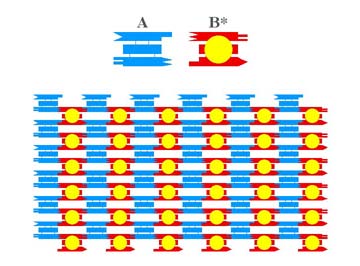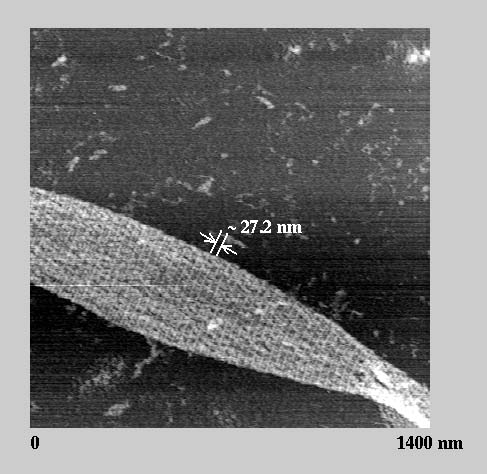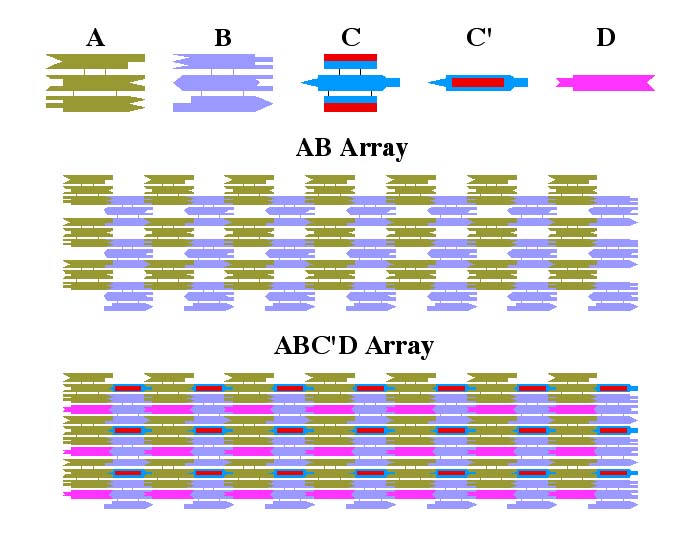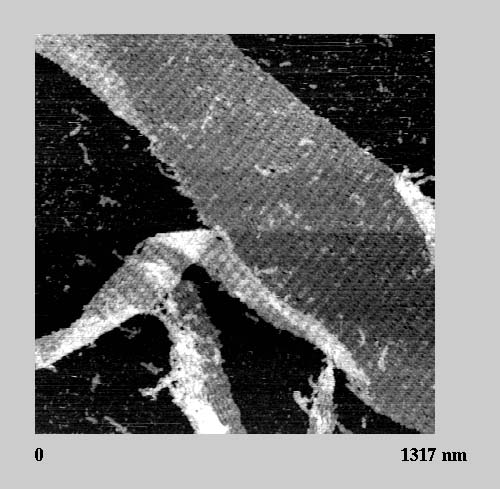

This array looks like the following in the AFM:

However, we were also able to do something else interesting with TX molecules. A TX array can be connected 1-3, as shown in the AB array below. This leaves an extra space between units. It is possible to take a third TX molecule (C below), and insert it into the slot if one rotates it by three double helical clicks, about 103 degrees, to convertit to C'. The lattice below contains a helix, D, to fill the final space.

This lattice looks exactly as we would expect it to when viewed in the AFM:

Thus, we can create specific structural features on the nanometer scale by self-assembly of triple crossover arrays.
Return to Two Dimensional Arrays
Return to Ned Seeman's Nanotechnology Page
Return to Homepage for Ned Seeman's Lab